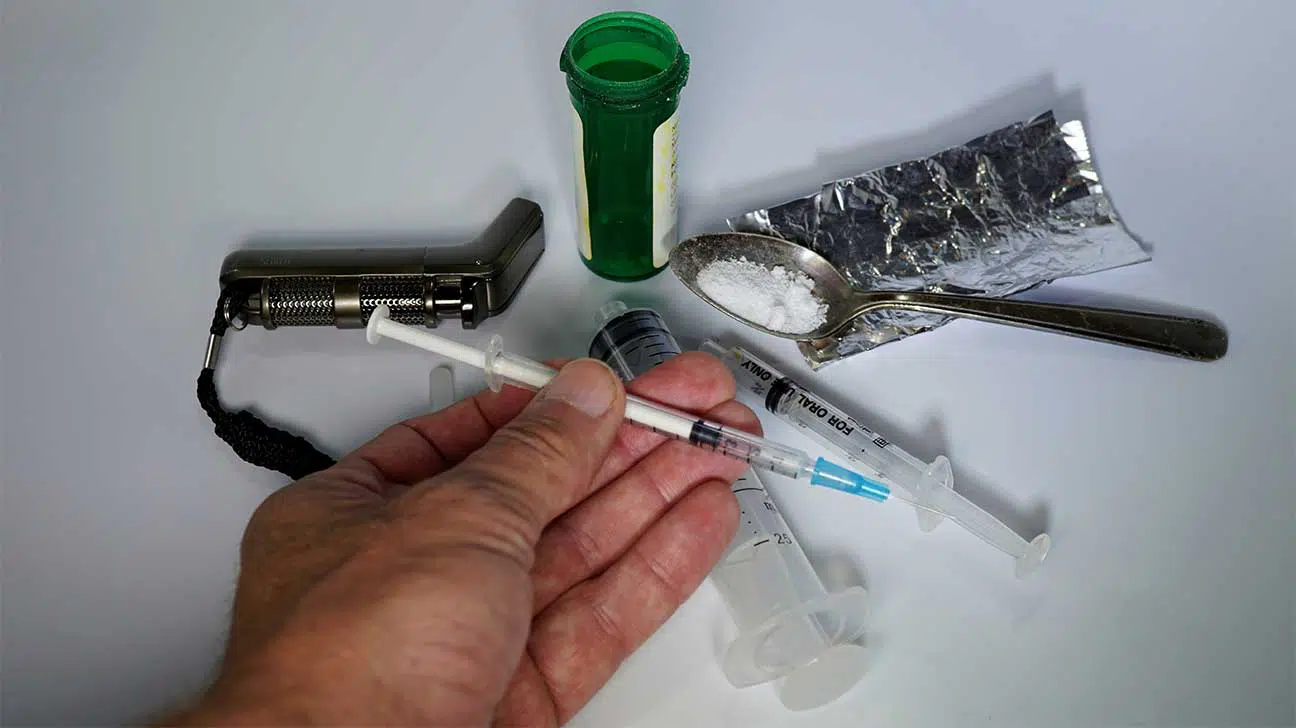How To Identify Heroin Paraphernalia
Identifying heroin paraphernalia requires an understanding of how paraphernalia such as spoons, foil, and other items are utilized. The manner of use also affects the severity of health risks.

Illicit use of street heroin has evolved to keep pace with the ever-changing unregulated drug market of synthetic opioids. Methods of use vary depending on the availability of substances.
No matter how heroin is used, all methods are equally liable to lead to chronic drug use, an addiction to heroin, and potentially fatal heroin overdose.
What Is Heroin Paraphernalia?
Common heroin paraphernalia may include household items or specific devices that are used to prepare heroin for use. Unsterilized equipment greatly increases health risks.
An object such as a spoon might appear innocuous, but it could indicate heroin use when found in combination with other drug paraphernalia or substances, such as commonly abused opioids.
Common heroin paraphernalia include:
- spoons (regular or miniature)
- hypodermic needles or syringes
- lighters
- vials
- aluminum or tin foil
- tubes, pipes, or straws
- cotton balls or swabs
- rolling papers
- ice pipes
- water pipes
- electric pipes
- purity testing equipment
Paraphernalia designed specifically for purposes of manufacturing, concealing, ingesting, or making heroin and other illegal and controlled substances are prohibited by federal law.
Anyone caught with smoking paraphernalia such as bongs, water pipes, and cone-shaped pipes known as “chillums” can be charged with possession of drug paraphernalia.
Possession of drug paraphernalia, even without drug residue, is admissible evidence for a class 1 misdemeanor case. Possession of illegal drugs or controlled substances can result in a felony.
Paraphernalia For Methods Of Heroin Use
In order to identify paraphernalia specific to heroin use, it is necessary to understand the mechanics of use, or how different forms of heroin are administered with specific tools.
Smoking Heroin
Powder heroin and black tar heroin are often melted against aluminum foil.
Then, the released vapors are inhaled through a tube, pipe, or straw made of glass, metal, plastic, ceramic, wood, or stone.
Other items specific to smoking heroin are rolling papers and roach clips, which can easily be disguised as intended for tobacco or marijuana use.
Injecting Heroin
Injecting heroin is often seen as the most potent, effective method of use.
Common paraphernalia involved with injecting heroin include:21
- a needle or syringe
- lighter
- spoon
- cotton balls
- a shoelace, rubber band, or string used to “tie off” a person’s arm or leg when injecting
Heroin is injected intravenously, subcutaneously, or intramuscularly to achieve the maximum euphoric and analgesic effects.
Intravenous heroin injection is also the most labor-intensive method, and requires a preparation process that entails dissolving powder heroin or liquifying tar heroin and adding it to a syringe.
Snorting Heroin
Snorting heroin powder requires the least amount of preparation and almost no need for paraphernalia.
The most that is needed is a rolled piece of paper, straw, or bill to inhale heroin intranasally.
Risks Associated With Paraphernalia For Heroin Injection
There are risks of using any paraphernalia for heroin abuse — for example, a bill, tube, or straw may not be sanitary and cause bacterial infections.
However, there are much more significant health risks associated with injection heroin use.
This is due to the lack of sterilized equipment, especially hypodermic needles and hypodermic syringes that are used repeatedly.
Unsterilized needles that are reused and shared are deadly conduits for HIV transmission and the spread of other life-threatening diseases, viruses, and infections.
Syringes can also carry and transfuse contaminated blood through heroin injections, causing the spread of Hepatitis B and C as well as HIV, and various bacterial infections.
Find A Drug Rehab Program For Heroin Addiction
The presence of heroin paraphernalia and other signs of heavy substance abuse are signs of heroin addiction and life-threatening consequences.
It is crucial to catch heroin abuse before it escalates and reaches a point of crisis, which may be a fatal overdose. With the right clinical approach, heroin addiction can be treated successfully.
At Spring Hill Recovery Center, our team of addiction specialists can provide information about the addiction treatment process and the criteria for determining the level of care needed.
If a family member or a loved one is exhibiting signs of an opioid or substance use disorder, get the help they need by calling the our helpline today.
- Centers for Disease Control and Prevention (CDC) – Access to clean syringes https://www.cdc.gov/policy/hst/hi5/cleansyringes/index.html
- Department of Justice – Drug Paraphernalia Fast Facts https://www.justice.gov/archive/ndic/pubs6/6445/6445p.pdf
- Harm Reduction Journal – Factors that influence the characteristics of needles and syringes https://harmreductionjournal.biomedcentral.com/articles/10.1186/s12954-015-0069-7
- National Center for Biotechnology Information (NCBI) – Paraphernalia Laws https://www.ncbi.nlm.nih.gov/pmc/articles/PMC6775926/
- National Institutes on Drug Abuse (NIDA) – Other Drug Use Paraphernalia Besides Needles https://archives.drugabuse.gov/news-events/nida-notes/1997/04/other-drug-use-paraphernalia-besides-needles-may-increase-hiv-infection-risk
- Office of Justice Programs – HEROIN PARAPHERNALIA - BREAKDOWN OF A FIX https://www.ojp.gov/ncjrs/virtual-library/abstracts/heroin-paraphernalia-breakdown-fix
- VeryWell Mind – Drug Paraphernalia - Everyday Items for Drug Use https://www.verywellmind.com/drug-paraphernalia-guide-4020396
- WebMD – Heroin Overdose: Signs, Symptoms, and How to Get Help https://www.webmd.com/connect-to-care/addiction-treatment-recovery/heroin/signs-and-symtpoms-of-heroin-overdose
- WebMD – Opioid Abuse: 4 Factors That Could Provoke A Relapse https://www.webmd.com/connect-to-care/addiction-treatment-recovery/prescription/factors-that-could-provoke-an-opioid-abuse-relapse


